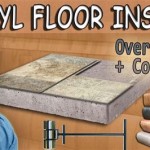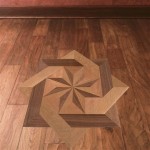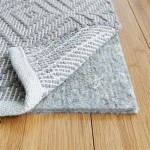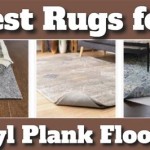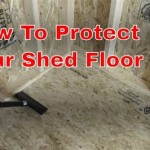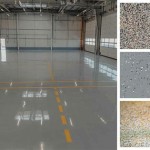How To Remove Sticky Residue From Floor Boards
Sticky residue on floorboards is a common household nuisance. This can be caused by various factors, including spilled food and drinks, adhesive tape, glue, wax, or even the remnants of cleaning products. Dealing with this sticky mess can be frustrating, especially if the residue is stubborn and covers a large area. The removal process requires patience, appropriate cleaning agents, and the correct techniques to avoid damaging the floor's finish. Different types of floorboards, such as hardwood, laminate, or vinyl, often require specific cleaning methods.
This article will provide a comprehensive guide on how to effectively remove sticky residue from floorboards. It will explore various cleaning solutions and techniques, catering to different types of floorboards. The information herein is designed to equip individuals with the knowledge and skills required to address sticky residue problems and restore their floors to their original clean condition.
Identifying the Type of Residue and Floorboard
Before attempting to remove any sticky residue, it is crucial to identify both the type of residue and the type of floorboard. The nature of the residue will dictate the most appropriate cleaning agent. For example, adhesive residue requires solvents, while greasy residue benefits from degreasers. Similarly, the floorboard material determines the type of cleaning solution safe to use. Hardwood floors are susceptible to water damage and harsh chemicals, whereas laminate floors may be more resistant. Vinyl floors are generally more durable but can still be affected by specific solvents.
To identify the residue, consider the source of the stain. If it originated from spilled syrup, a warm water and soap solution might suffice. Tape residue, on the other hand, may require the use of adhesive removers or solvents like rubbing alcohol. Waxy residue, like that from candle wax, often needs heat to soften it before being cleaned up.
Identifying the floorboard type is equally important. If unsure, consult the flooring manufacturer's documentation. Hardwood floors typically have a natural wood grain and can be solid wood or engineered wood. Laminate floors often have a printed layer mimicking wood or stone and are typically more scratch-resistant than hardwood. Vinyl floors are commonly found in kitchens and bathrooms and are waterproof and resilient.
Understanding the characteristics of both the residue and the floorboard is paramount to selecting the right cleaning method and preventing potential damage.
Safe and Effective Cleaning Solutions
When dealing with sticky residue, multiple cleaning solutions can be employed, each with its own advantages and disadvantages. It is always recommended to test any cleaning solution in an inconspicuous area of the floor before applying it to the entire affected area. This will reveal potential discoloration or damage caused by the solution.
Warm Water and Dish Soap: This is the gentlest and often the first solution to try. Mix a small amount of mild dish soap with warm water. Dampen a soft cloth or mop with the solution and gently scrub the residue. Avoid saturating the floor, especially hardwood. Rinse the area with clean water and dry thoroughly. This method is particularly effective for fresh spills and light residues.
Vinegar and Water: Vinegar is a natural cleaning agent that can dissolve many types of sticky residues. Mix equal parts of white vinegar and warm water. Apply the solution to the affected area, let it sit for a few minutes, and then scrub gently with a soft cloth or sponge. Rinse with clean water and dry. Vinegar is generally safe for most floor types, but it should be used sparingly on hardwood floors due to its acidity.
Rubbing Alcohol (Isopropyl Alcohol): Rubbing alcohol is an effective solvent for removing adhesive residues, such as those left by tape or stickers. Apply a small amount of rubbing alcohol to a clean cloth and gently blot the residue. Avoid pouring the alcohol directly onto the floor. Allow the alcohol to sit for a few minutes to dissolve the adhesive, then wipe the area clean. Rubbing alcohol evaporates quickly, minimizing the risk of water damage. Test on an inconspicuous area first, as it can potentially affect the finish of certain floors.
Baking Soda Paste: Baking soda is a mild abrasive that can help remove stubborn residues. Mix baking soda with a small amount of water to form a thick paste. Apply the paste to the sticky residue and let it sit for about 15-20 minutes. Gently scrub the area with a soft cloth or sponge. Rinse with clean water and dry. Baking soda is generally safe for most floor types, but avoid excessive scrubbing, which can scratch the surface.
Commercial Adhesive Removers: Numerous commercial adhesive removers are available on the market. These products are specifically formulated to dissolve adhesives and can be very effective for removing stubborn residues. Always follow the manufacturer's instructions carefully. Ensure the chosen product is suitable for your floor type and test it in an inconspicuous area first. Provide proper ventilation when using commercial adhesive removers, as some may contain strong fumes.
Oil-Based Solutions: For certain types of sticky residues, such as those from crayon or wax, oil-based solutions like mineral oil, baby oil, or even cooking oil can be effective. Apply a small amount of oil to the affected area and let it sit for a few minutes to soften the residue. Wipe the area clean with a soft cloth. Follow up with a mild soap and water solution to remove any remaining oil residue. The oil helps to break down the residue without damaging the floor surface. Always test in an inconspicuous area first.
Step-by-Step Cleaning Techniques
The application of the cleaning solution is as important as the solution itself. Using the correct technique ensures the residue is removed effectively and without further damaging the floor.
Preparation: Begin by sweeping or vacuuming the floor to remove any loose dirt or debris. This prevents scratching the floor surface during the cleaning process. Protect surrounding areas, such as baseboards, with plastic sheeting or painter's tape if using strong solvents. Gather all necessary supplies, including cleaning solutions, cloths, sponges, a bucket of clean water, and drying towels.
Application: Dampen a soft cloth or sponge with the chosen cleaning solution. Avoid oversaturating the cloth, especially when dealing with hardwood floors. Gently blot the sticky residue, allowing the solution to penetrate and loosen the adhesion. Avoid rubbing aggressively at this stage, as it can spread the residue or damage the floor finish. For localized stains, apply the solution directly to the affected area. For larger areas, work in small sections to prevent the solution from drying before you can clean it up.
Scrubbing: After allowing the cleaning solution to sit for a few minutes, gently scrub the area with a soft cloth, sponge, or a soft-bristled brush. Use circular motions and apply moderate pressure. For stubborn residues, you may need to repeat the application and scrubbing process. Avoid using abrasive scrub pads or steel wool, as these can scratch the floor surface. If using a commercial adhesive remover, follow the manufacturer's instructions regarding application and scrubbing time.
Rinsing: Once the sticky residue is loosened, rinse the area thoroughly with clean water. Use a clean cloth or sponge to wipe away any remaining cleaning solution and residue. Ensure no cleaning solution remains on the floor, as this can attract dirt and create a sticky film. For hardwood floors, use a barely damp cloth to avoid excess water exposure.
Drying: After rinsing, dry the area immediately with a clean, dry towel. This is particularly important for hardwood floors to prevent water damage. Ensure the floor is completely dry before walking on it to prevent slipping or tracking dirt. If necessary, use a fan to speed up the drying process. For larger areas, consider using a dry mop to absorb excess water.
Post-Cleaning: After the cleaning process is complete, inspect the area to ensure all sticky residue has been removed. If any residue remains, repeat the cleaning process. Once the floor is clean and dry, consider applying a floor polish or sealant to protect the finish and prevent future stains. This is particularly important for hardwood floors to maintain their luster and protect them from moisture damage.
By following these step-by-step techniques, individuals can effectively remove sticky residue from floorboards while minimizing the risk of damage. Always prioritize patience and gentle cleaning to ensure the best possible results.

Removing Glue Or Adhesive From Hardwood Floors The Speckled Goat

How To Remove Sticky Residue From Hardwood Floors Diy Hometalk

How To Remove Glue From Wood Floors Pete S

Removing Glue Or Adhesive From Hardwood Floors The Speckled Goat

Flooring How Can I Remove Carpet Adhesive From Hardwood Floors Home Improvement Stack Exchange

How To Strip Backing Paper Glue From Floorboards

Removing Glue Tar Paper From Hardwood Floors Farmhouse Restoration Day In The Life

How To Remove Glue From Wood Floors Pete S

Floorboards In A Right State And How To Remove Removing Old Lino Backing Glue Varnish Period Property

How To Remove Sticky Residue From Hardwood Floors Diy Hometalk
See Also
